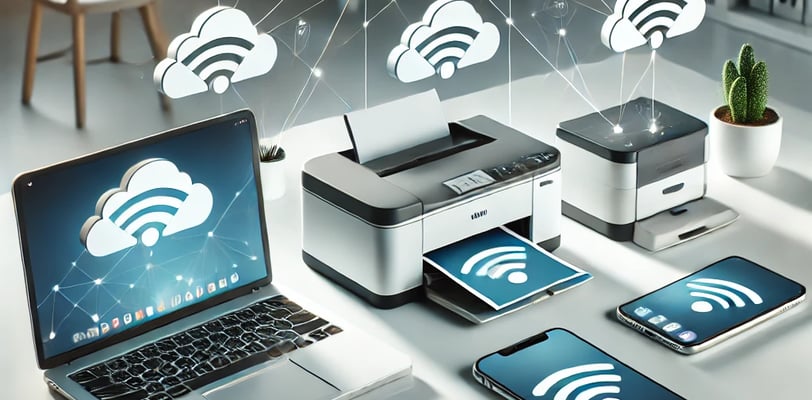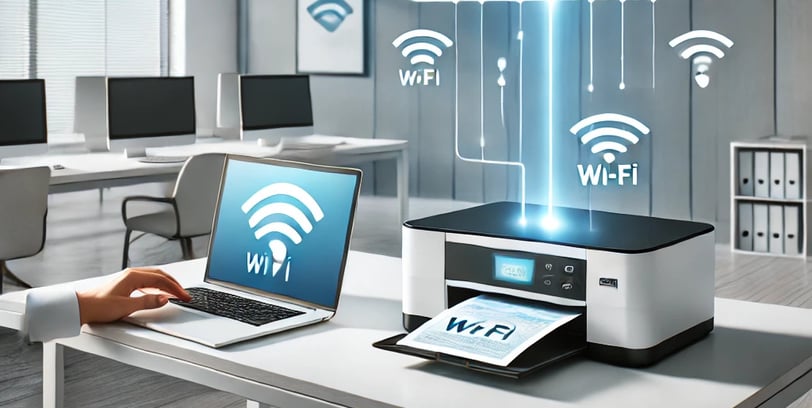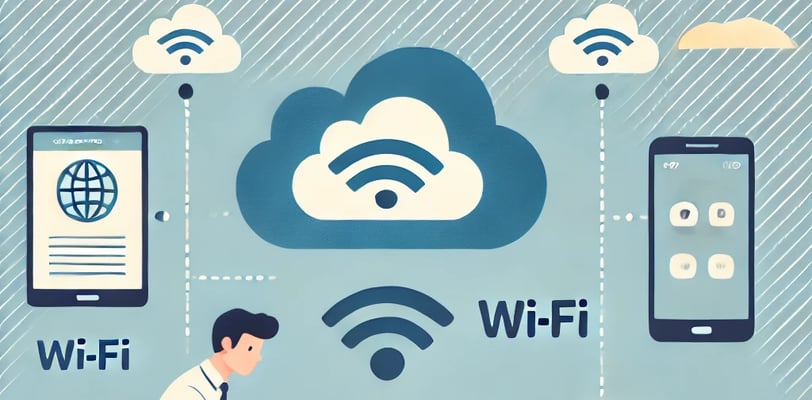How to Set Up Cloud Printing for Remote Access
Explore cloud printing for seamless remote access, allowing users to print from anywhere. Guide covers setup, platforms, security tips, and best practices
Praveen Kumar - Canon Printer Specialist
11/17/20244 min read


1. What Is Cloud Printing?
Cloud printing is a technology that lets you print from any device, anywhere, by sending files to a printer over the internet. Instead of using a USB cable or connecting to a printer directly on a local network, cloud printing uses online services to connect your device to the printer remotely.
2. Why Use Cloud Printing for Remote Access?
Cloud printing offers several key benefits:
Convenience: Print from almost any device—like a laptop, smartphone, or tablet—even if you’re not physically near the printer.
Efficiency for Remote Work: Cloud printing allows remote employees to send documents to office printers, making it easier to work from home or other locations.
Flexibility: Suitable for both small businesses and large organizations, cloud printing can scale to fit different needs.
3. Popular Cloud Printing Solutions
Since Google Cloud Print ended in December 2020, here are some reliable alternatives for remote printing:
Printer Manufacturer Cloud Services: Many modern printers come with cloud services like HP ePrint, Canon PRINT, and Epson Connect. These allow you to print by emailing documents directly to the printer.
Apple AirPrint and iCloud Printing: Designed for iOS and macOS, AirPrint lets Apple users print without installing drivers, while iCloud provides remote access to AirPrint-enabled printers.
Microsoft Universal Print: A cloud printing service for Windows 10 and 11, ideal for business environments.
Third-Party Cloud Printing Services: Solutions like PrinterOn, PaperCut, and Printix are available for both small businesses and larger organizations.


4. Step-by-Step Guide to Setting Up Cloud Printing
Setting up cloud printing will vary depending on the platform you’re using. Here’s how to configure it on several popular platforms:
A. Using Printer-Specific Cloud Services
Most printer brands offer their own cloud services for remote printing. Here’s how to set up a few popular options:
HP ePrint
Sign in to your HP account and register your printer using its unique code (found in settings or on a label).
Enable ePrint on your printer and note its unique email address.
You can now send documents to your printer by emailing them to this address.
Epson Connect
Visit the Epson Connect Printer Setup page and download the required drivers or app.
Register your Epson printer by following the on-screen instructions.
Your printer will get a unique email address; send documents to this address to print.
Canon PRINT and PIXMA Cloud Link
Open the Canon PRINT app on your mobile device and add your Canon printer.
Go to PIXMA Cloud Link, and follow prompts to register the printer.
The printer will appear in your Canon account, enabling remote printing through the app.
B. Setting Up Remote Printing on iOS and macOS
Ensure AirPrint Compatibility
Check that your printer supports AirPrint, which most new printers do. Confirm this in the manual or on the manufacturer’s website.
Connect Printer to Wi-Fi
Connect your printer to the same Wi-Fi network as your Apple device for easy setup.
Using AirPrint
Open the document to print on your iPhone, iPad, or Mac.
Select “Share” or “Print,” choose your AirPrint printer, and send the job.
iCloud Setup for Remote Access
Connect your AirPrint printer to your iCloud account.
Use any iCloud-connected Apple device to send print jobs remotely.
C. Setting Up Remote Printing on Windows with Microsoft Universal Print
Requirements for Universal Print
Available to Microsoft 365 subscribers.
Requires a compatible printer or a Print Connector to link older printers.
Setup
Log into Microsoft 365 and open the Admin Center.
Go to Devices > Printers and select Register a printer.
Assign users who can print remotely via account settings.
Remote Printing
Open the document, choose “Print,” select your Universal Print printer, and send the job.
D. Using Third-Party Cloud Printing Services
Several services, like PrinterOn, enable cross-platform remote printing.
Sign Up and Register Your Printer
Create an account on your chosen cloud printing service.
Register your printer by following the service’s instructions.
Install the App on Your Device
Download the service’s app for mobile or desktop devices.
Remote Printing
Use the app or service website to send print jobs from anywhere to your registered printer.
These cloud solutions allow you to print remotely with convenience and ease across devices and platforms.
5. Security and Privacy Considerations
Cloud printing is convenient, but security is essential to protect against unauthorized access. Here are some tips:
Use Strong Passwords: Ensure your printer and account passwords are unique and difficult to guess.
Enable Two-Factor Authentication: Many cloud printing services offer 2FA, providing an additional security layer.
Regularly Update Firmware: Keep your printer’s firmware updated to benefit from the latest security patches.
Limit User Access: In business settings, restrict cloud printer access to trusted users to reduce risks.
Disable Unused Features: If you only need printing, disable other features like scanning to minimize potential vulnerabilities.


6. Troubleshooting Common Cloud Printing Issues
Remote cloud printing is generally reliable, but here are common issues and fixes:
Printer Not Detected
Verify your internet connection and ensure the printer is connected to the network.
Restart the printer and your device to refresh the connection.
Print Job Fails to Send
Confirm the cloud service is online and that you’re logged in.
Ensure the printer firmware is updated and that there are no paper jams or ink issues.
Slow Printing
Network congestion can slow printing; try reducing the document resolution to speed things up.
Document Prints with Errors or Incomplete Pages
Some file types may not be supported. Converting the document to PDF usually resolves this.
Mobile Device Compatibility Issues
Use a compatible app for your OS and ensure necessary permissions are granted for remote access.
7. Final Thoughts
Cloud printing has become an essential tool for remote workers, businesses, and anyone seeking flexible printing solutions. By following the setup steps and best practices outlined above, you can easily set up and use cloud printing for remote access. Whether you’re using a manufacturer’s cloud service, a third-party solution, or platform-specific features like AirPrint or Universal Print, cloud printing can streamline your workflow and enhance productivity.
Thanks For Reading:)
Insights
Explore the latest in printer technology and tips.
Resources
Support
contact@bestprintershop.com
+918920029543
© 2024 BestPrinterShop . All rights reserved.
